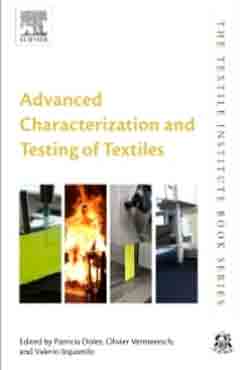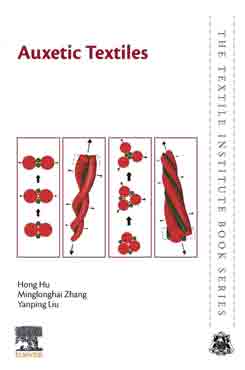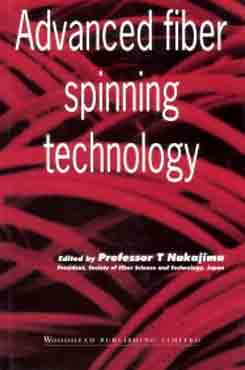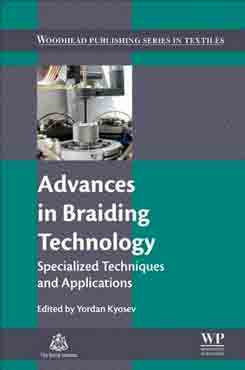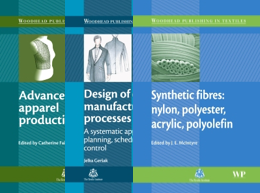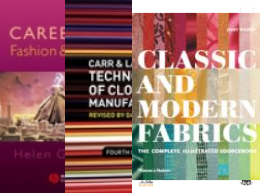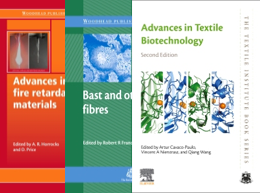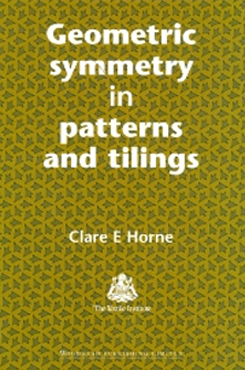Description
Textile design is a complex field of practice which operates in a competitive, global industry. Designers need to take into account not only the design but also the manufacture, technological development and application of the final product. Textile design provides a broad overview of the fundamentals of and advances in textile design, as well as practical case studies of relevant industries. Part one covers the principles of fabric construction as applied to textile design, with chapters on fundamental principles, woven and knitted textile design.
Part two discusses surface approaches to textile design, with chapters on such topics as surface design of textiles, printed and embroidered textile design, dyeing and finishing and the use of colour in textile design. Finally, part three focuses on the applications and advances in textile design, including chapters covering colour trend forecasting, sustainable textile design, fashion, interior and 2D to 3D design considerations and new developments in technical and future textiles.
With its distinguished editors and international team of contributors, Textile design is an essential reference for design professionals in the textile and fashion industries, as well as those who specialise in interior textiles and academics with a research interest in the area.
Key Features
- A broad overview of textile design covering fundamental topics such as principles of fibres and fabrics, knitted fabric design, through to the dyeing, finishing and printing aspects of textile design
- Explores the design aspects of technical textiles and future textiles
- An invaluable source of information on textile design and suitable for design professionals in the textile and fashion industries, as well as those in academia
Readership
Table of Contents
- Part I: Principles: fabric construction approaches to textile design
Chapter 1: Fibres, yarns and fabrics: fundamental principles for the textile designer
Abstract:
1.1 Introduction
1.2 Basic principles of fibres, yarns and fabrics
1.3 Main types of fibres, yarns and fabrics, and their production methods
1.4 Main properties and characteristics of fibres, yarns and fabrics
1.5 Future trends
1.6 Conclusion
Chapter 2: Woven textile design
Abstract:
2.1 Introduction
2.2 Weave processes
2.3 Overview of end uses
2.4 Key issues affecting the designer
2.5 Synopsis of different weave processes
2.6 Computer technologies
2.7 Practical design applications
2.8 Future trends
2.9 Conclusion
Chapter 3: Knitted textile design
Abstract:
3.1 Introduction
3.2 Context for knitted fabric design
3.3 The principles of weft knitted textiles
3.4 Practical design applications of knitted textiles
3.5 Future trends
3.6 Sources of further information and advice
3.7 Acknowledgements
Part II: Principles: surface approaches to textile design
Chapter 4: Surface design of textiles
Abstract:
4.1 Introduction
4.2 What is surface design?
4.3 Applications of surface design
4.4 Future trends
Chapter 5: Printed textile design
Abstract:
5.1 Introduction
5.2 Basic history and principles of applying colour to cloth: methods and types of textile printing
5.3 The relationship between textile printing and design
5.4 Contemporary principles and applications of printed textile design
5.5 Future trends
Chapter 6: Embroidered textile design
Abstract:
6.1 Introduction
6.2 Commercial production methods for embroidered textiles
6.3 Digitising embroidery designs
6.4 Pattern control in embroidered textile designs
6.4 Applications of commercial embroidery production
6.6 Location of embroidery production
6.7 The embroidered textile design process
6.8 Future trends
6.9 Sources of further information and advice
Chapter 7: Designing through dyeing and finishing
Abstract:
7.1 Introduction
7.2 Designing through dyeing
7.3 Designing through dyeing techniques
7.4 Designing through garment dyeing
7.5 Designing through finishing
7.6 Future trends
Chapter 8: The use of colour in textile design
Abstract:
8.1 Introduction
8.2 The perception of colour
8.3 Palette development
8.4 Design
8.5 Culture
8.6 Trend and product
8.7 Communicating colour
8.8 Environmental and commercial issues
8.9 Future trends
8.10 Sources of further information and advice
Part III: Applications and advances
Chapter 9: Colour trend forecasting and its influence on the fashion and textile industry
Abstract:
9.1 Introduction
9.2 Principles of colour forecasting in the fashion and textile industry
9.3 Applications of colour and trend forecasting in the fashion and textile industry
9.4 Future trends
9.5 Sources of further information and advice
Chapter 10: Sustainable textile design
Abstract:
10.1 Introduction: key issues affecting textile and fashion design
10.2 Strategies for fashion and textile design
10.3 Strategies for textile and fashion designers: recycling and reuse – beginning to close the loop
10.4 The designer empowered
Chapter 11: Fashion design: the dynamics of textiles in advancing cultural memes
Abstract:
11.1 Introduction
11.2 Key issues: the relationships between fashion houses and textile merchants
11.3 Suitability of different textiles for fashion design
11.4 The ‘apparel-body construct’ (ABC) theory of fashion design
11.5 Applications of CAD/CAM (computer-aided design/ computer-aided manufacturing) in fashion design
11.6 Future trends
Chapter 12: Interior textile design
Abstract:
12.1 Introduction
12.2 Overview
12.3 The key issues and considerations of the design of interior textiles
12.4 New trends and fashions
12.5 Case studies
Chapter 13: The interaction of two and three dimensional design in textiles and fashion
Abstract:
13.1 Introduction
13.2 Triangulation: the body, textile and garment form
13.3 Silhouette
13.4 Spatial garment forms: sculptural, architectural and hybrid
13.5 Different approaches to textile/garment integration
13.6 The garment as canvas
13.7 Sustainable design approaches
13.8 Future trends
Chapter 14: The design of technical textiles
Abstract:
14.1 Introduction
14.2 Sectors using technical textiles
14.3 Recent innovations and directions in technical textiles
14.4 Innovation and commercialization issues in technical textiles
14.5 Technical textiles in education
14.6 Future trends
14.7 Sources of further information and advice
Chapter 15: Designing future textiles: new developments in textile structures and surface treatments
Abstract:
15.1 Introduction
15.2 Design of future fibers and yarns
15.3 Design of future fabric structures
15.4 Design of future fabric surface
15.5 Conclusion
15.6 Sources of further information and advice
Index
